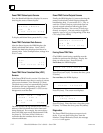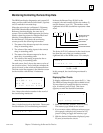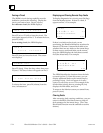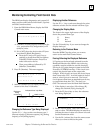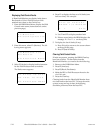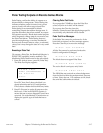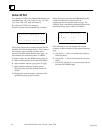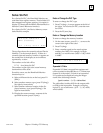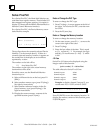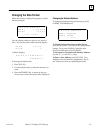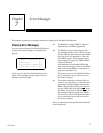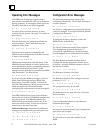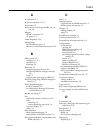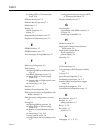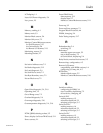
6
6-3
GFK-0121E
Chapter 6 Reading CPU Memory
Series Six PLC
For a Series Six PLC, the Hand-held Monitor can
read data from register memory. That includes I/O
data mapped into register memory, (it is easier to
display I/O data with the HHM’s Monitor Block or
Monitor Control Reference function).
For a Series Six PLC, the Device Memory screen
looks like this example:
D E V I C E M E M O R Y 7
M E M : (location)
t g l c h n g e n t r S B A
The top line shows the currently-selected Device
Number (7 in the example above). If there is a
currently-selected memory location, it appears on
the second line of the display as two numbers
separated by a colon.
The number on the left will be:
32768 for a Series Six PLC
The number on the right is the actual memory
location that will be read.
From this screen, use the Hand-held Monitor
function keys to:
A. Select a different device on the bus (press F4
(SBA)).
B. Select another memory type (press F2 (chng)).
See right for instructions.
C. Select another reference location in the dis-
played memory type (press F2(chng)). See
right for instructions.
D. Display the current memory contents of the
specified location (press F3 (entr)).
Enter or Change the PLC Type
To enter or change the PLC type:
1. Press F3 (chng). A cursor appears at the left of
the colon. For a Series Six PLC, enter the num-
ber 32768.
2. Press the F3 (entr) key.
Enter or Change the Memory Location
To enter or change the memory location:
1. On the same screen, press F1 ( > ) to move the
cursor to the right of the colon.
2. Press F2 (chng).
3. Enter a number equal to the actual register
number plus 16383. For example, for regis-
ter#100, you would enter (16383 + 100), which
is 16483:
M E M : 3 2 7 6 8 : 1 6 4 8 3
Expanded I/O Data
Expanded I/O data is mapped into registers and
can be accessed as described above. I/O data from
channel 0, or the main I/O chain in an expanded
I/O system can be displayed using the integer
result of the following formula:
((point number – 1) / 8) + table offset
The table offset is either 8192 for the output table
or 8320 for the input table. Example: to display
input 672, you would enter: ((672 – 1) / 8) +8320,
which is 8403.



